“ Exmoor’s Rivers – A National Treasure”.
I had been looking forward to Roger Furniss’s talk at the Lanacre Barn Gallery on April 5th. Situated in the heart of Exmoor a short distance from Lanacre bridge that straddles the River Barle. For two weeks the gallery has hosted an art exhibition focusing on fish and life within water. https://moorlandart.com In conjunction with this Jo Minoprio has invited various speakers to focus on and raise awareness of the tragic decline in salmon and river life.
After a drive across a mist shrouded moor our son James and I arrived at the gallery where guests were already mingling, chatting and perusing the fine fishy art on display.
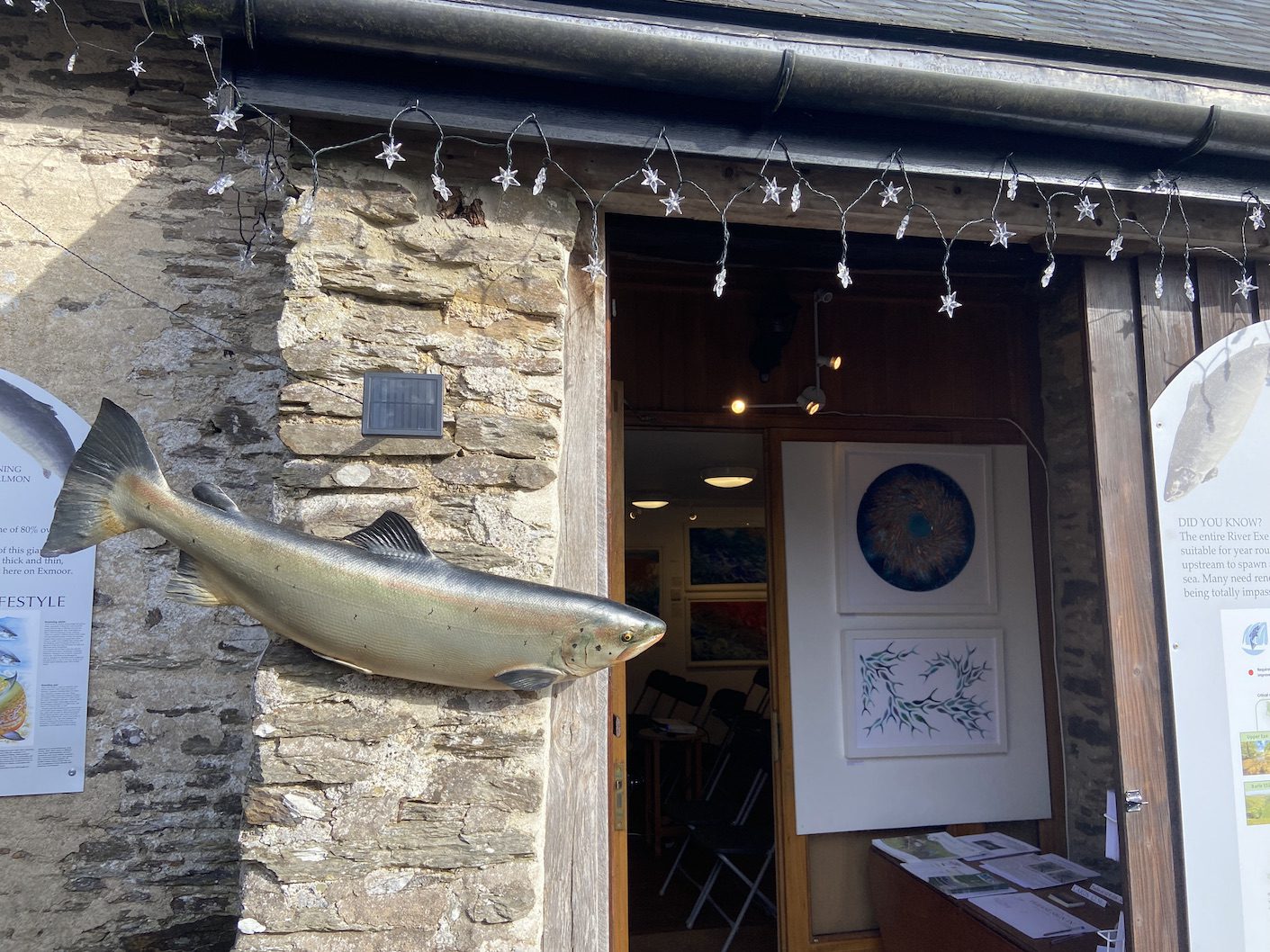
Roger Furniss has been a keen angler since his childhood days and shares my own passion and fascination with fish and water. He has worked within river authority’s, the water industry and since retirement has worked tirelessly with the Westcountry Rivers Trust the Angling Trust and other bodies to protect the rivers of the Westcountry.
This evening’s talk was entitled, “ Exmoor’s Rivers – A National Treasure”. Roger delivered the talk from the heart meandering through the complexities of rivers and the life within. Drawing upon his own in depth knowledge and experience Roger painted a vivid picture of troubled waters and a desire to put their survival high on the agenda.
Exmoor’s rivers are an integral part of the Exmoor National Park with the names of many moorland towns and villages and the moor itself derived from the rivers that flow through the landscape. Lynmouth, Lynton, Brayford, Exford, Winsford, Allerford, North Molton and South Molton a few examples.
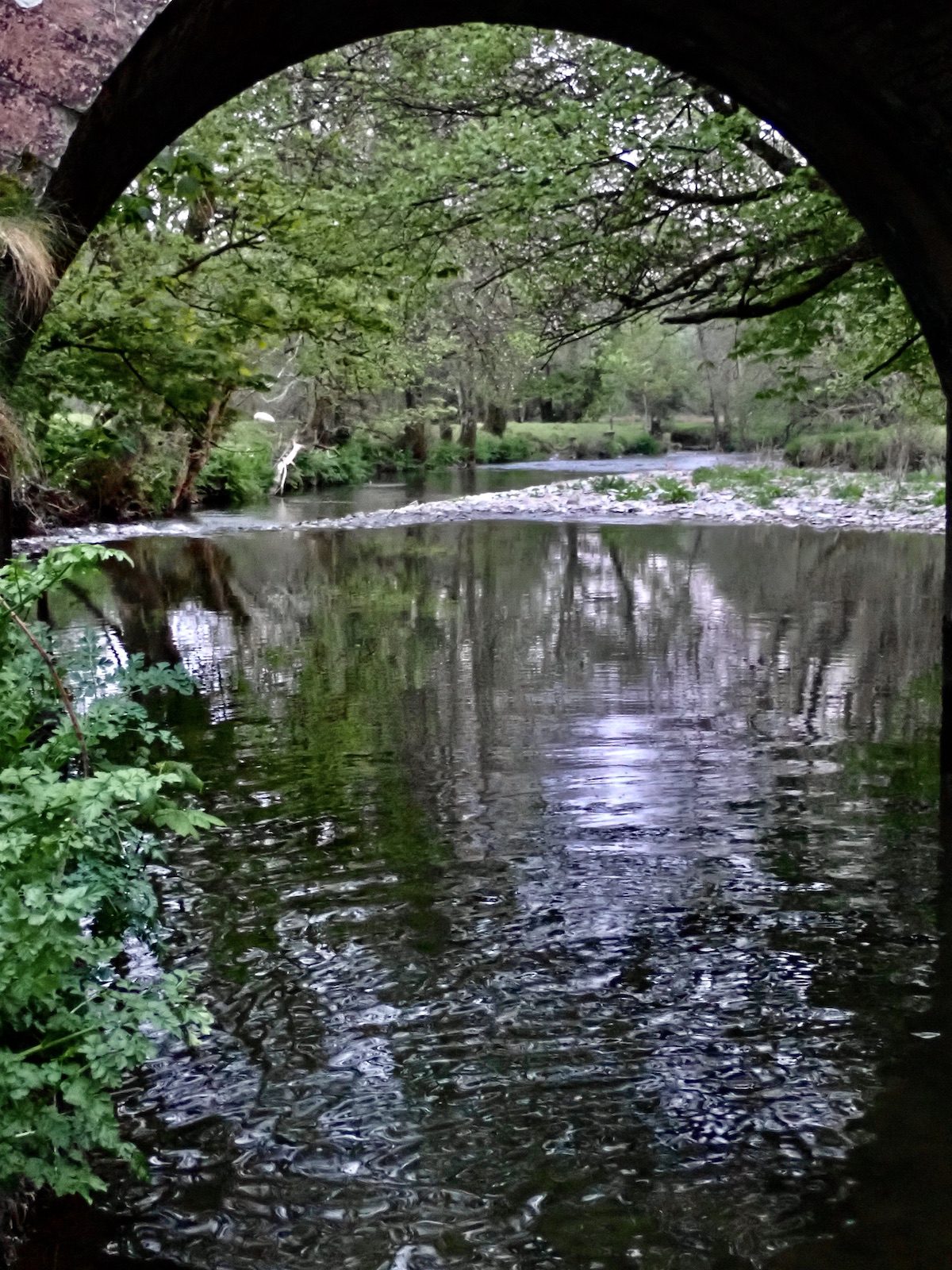
Reflecting upon his own childhood days beside rivers Roger drew upon the words of William Wordsworth. “Sweet childish days, that were as long, As twenty. “Sweet childish days, that were as long, As twenty days are now.”. Poignant words that we can all perhaps relate to as our perception of time passes as our living years tick away all too fast.
The story of rivers and the history of their protection is a fascinating tale that reflects the changing values and vagaries of our political system. In 1923 the Salmon and Freshwater fisheries Act imposed a statutory duty to protect and improve the life within the nation’s rivers.
“The Salmon and Freshwater Fisheries Act 1923 was an Act of Parliament passed by the United Kingdom Government which attempted to consolidate fishery legislation, which at the time consisted of the Salmon Fishery Act 1861 and 18 amending Acts which had been passed subsequently.”
The 1995 Environment Act set out that National Parks should conserve and enhance the natural beauty, wildlife and cultural heritage. Promote opportunities for understanding and enjoyment of the special qualities of National Parks by the public. The Sandford principle states “ If there is a conflict between these purposes the authority shall attach greater weight to the former’. The 1995 Environment Act also updated environmental guidance with a statutory duty ‘ To Protect or Enhance the Environment…so as to promote the objective of achieving sustainable development’. This dual duty introduces Government allowance to prioritise.
The above legislation is there to protect the rivers and Environment but as with all laws they are only effective if adequately policed. In this instance the body that upholds the legislation is the Environment Agency a body that has had funding cut severely in recent years.
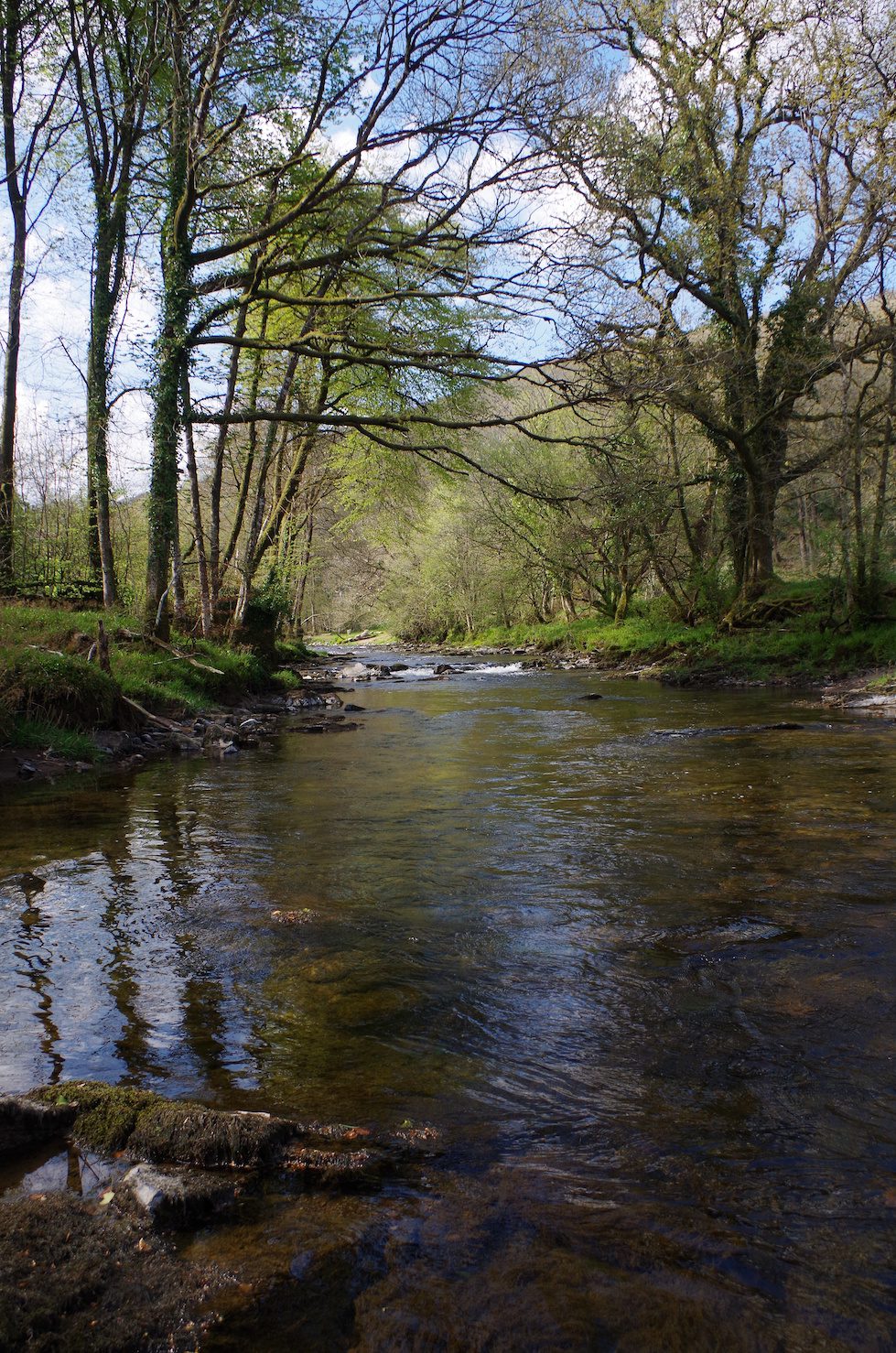
River’s matter to us all as they are used for water supply, drainage, Industry, Irrigation, recreation, wildlife corridors and landscape. From the perspective of nature the wildlife corridor aspect is vital in ensuring that local habitats do not become isolated.
There are many threats to the rivers of Exmoor and the UK. These include pollution, sewage, land use, abstraction, obstruction and diversion, climate change, access, non-native species, predation and taken for granted. Roger emphasised that TAKEN FOR GRANTED is the largest threat for without public pressure there is no political will to protect.
Roger gave an in depth description of each threat bringing the reality of each to life with images that illustrated each point. It is fair to say that a significant factor is the dense population of the UK. Roger drew comparisons with other less populated countries that have a greater connection with nature and of course have less pressure. For example; Canada has 3 people/ per SQ KM the UK 200 people/ per SQ KM.
The European Water Framework Directive set out ambitious targets for water quality improvements. Brexit has impacted upon this with the UK governments ambition to enshrine the legislation into UK law complex and drawn out. The Environment Agency is dual purpose with its focus politically motivated.
The picture painted is bleak but there is perhaps some room for optimism with significant efforts being made to address the issues. South West Water’s Upstream Thinking and MIRES initiatives have brought welcome funding to improve water quality with the aim of reducing the costs of water treatment. The MIRES project looks to retain water on the moors maintaining healthy flows in the rivers for longer. The charitable sector including the Westcountry Rivers Trust are undertaking and supporting various projects to protect and enhance the river. They work in partnership with the River Exe and Tributaries Association and Exmoor Rivers and Streams Group. The Exmoor National Park also play a significant role in the custodian ship of the rivers.
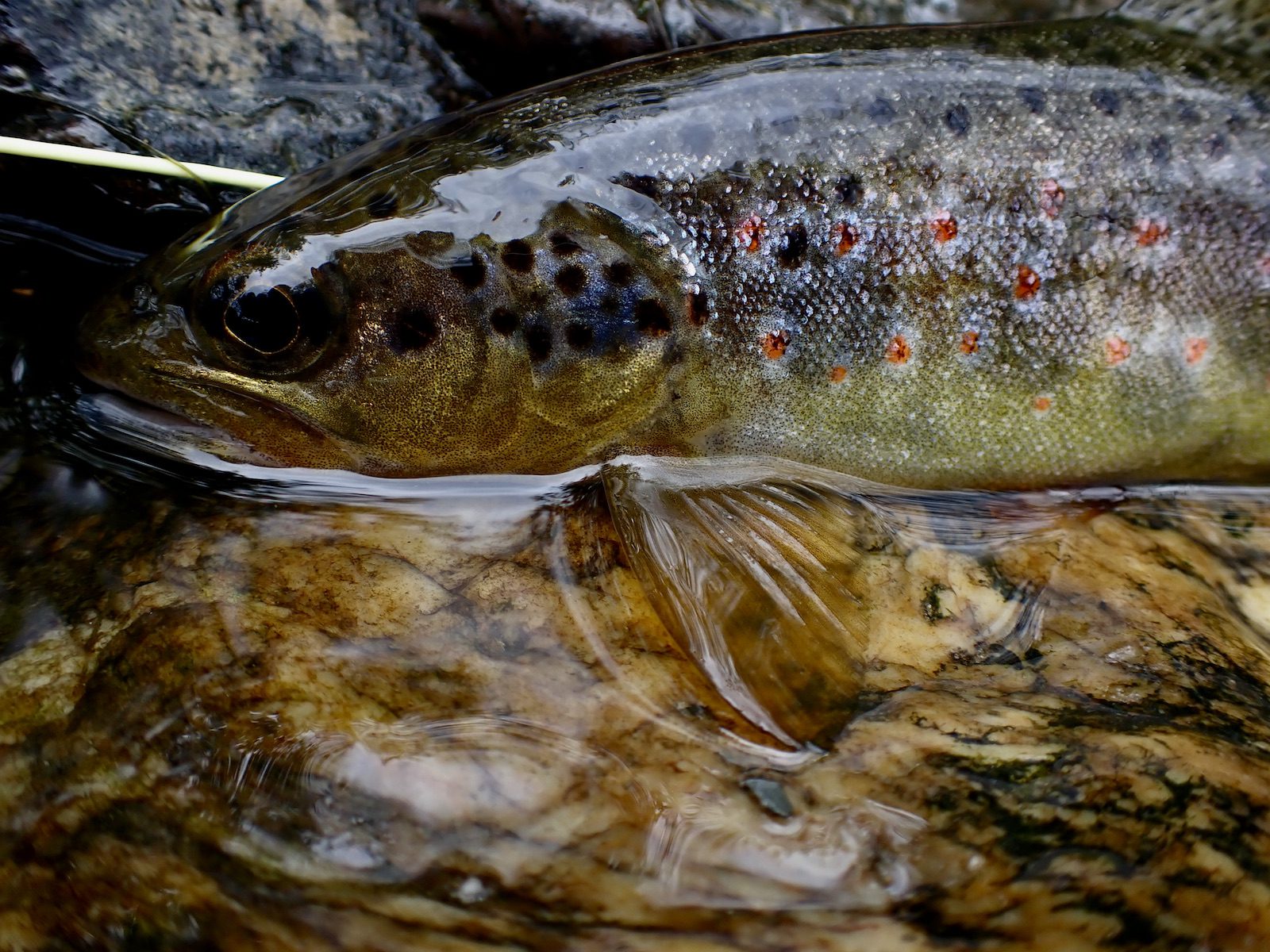
The river Barle and Upper Exe are the key spawning areas for salmon. There is therefore a strong focus upon the health of these areas. The River-fly Monitoring scheme has proved a useful tool in assessing the health of the river. The results clearly indicate that the high tributaries of the Exe on Exmoor are the healthiest areas.
Gravel washing of potential redds in late summer and early Autumn is seen as a valuable operation to remove silt and loosen compacted gravel. Gravel introduction has also been undertaken in some areas where gravel depletion has occurred.
The fencing of banks to reduce diffuse pollution from cattle and selected coppicing of trees to reduce overshading and allow natural light to penetrate.
The 30 weirs on the Exe Catchment are a major issue – a salmon heading for the upper Barle has to pass over 17 of them – as does every smolt. Good evidence that delays have a lasting effect on probability of reaching target spawning site. Will get worse with climate change. Smolt losses occur at weirs – if 2% at every weir half of upper Barle smolts don’t get to sea. Many kilometres of impounded reaches useless for juvenile salmon, great for predators.
The efforts to remove and improve the migration routes for fish on the Exe are an ambitious project that will require considerable investment.
Roger emphasised the importance of the three E’s. Economics, Enforcement and Education. Education is vital in the class room, engaging in river quality investigation, river restoration with landowners and via the Exmoor Rivers and Streams group.
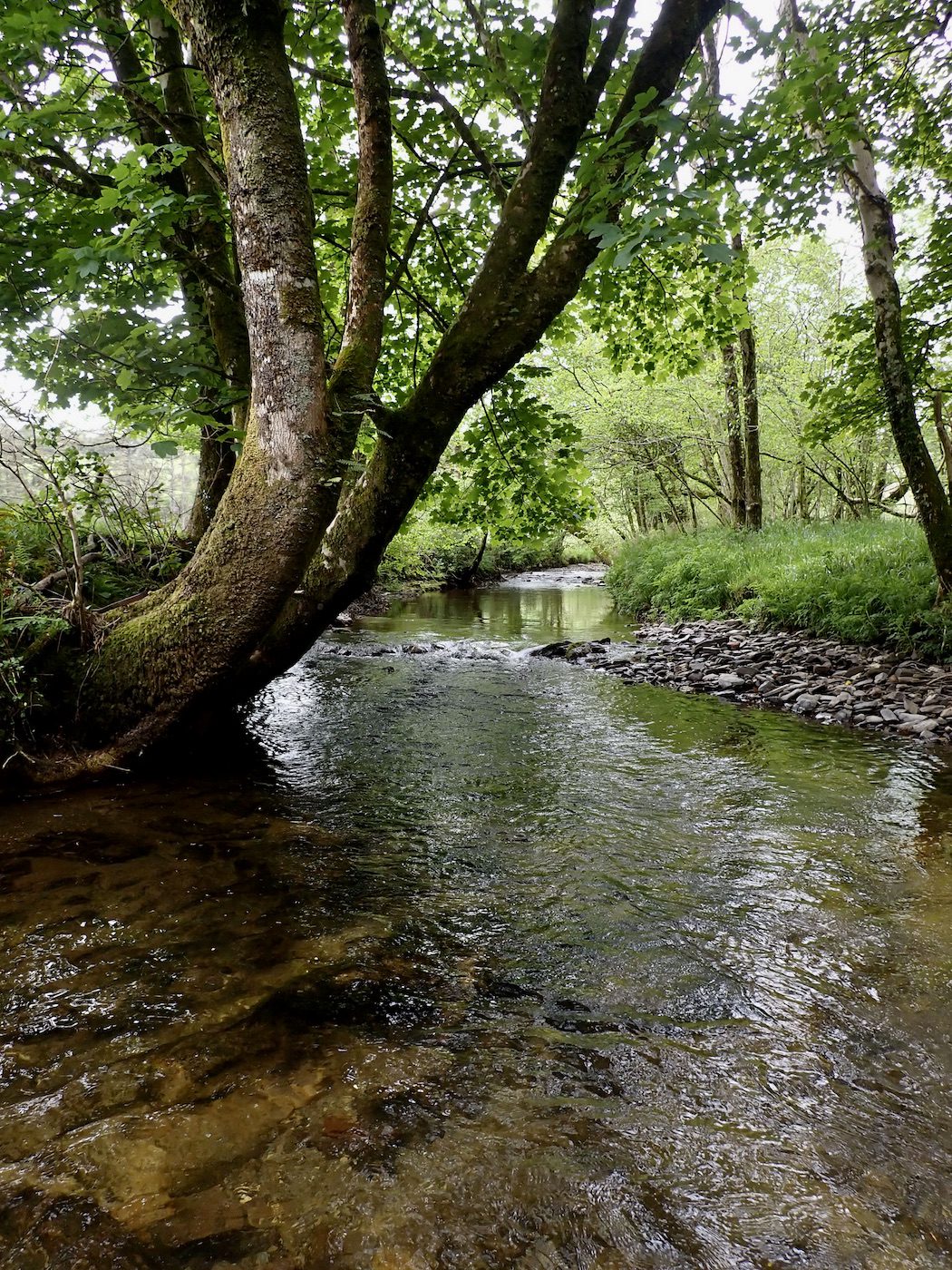
I spoke with Roger before his talk and expressed my concerns regarding the future for salmon and how recent talks I had attended had been increasingly depressing. Roger assured me that there would be some optimism with in his talk. This was true as there is a deep desire and conviction to do all that is possible to help nature to heal. Climate change is perhaps the greatest threat to salmon. And to mankind as a species. Some scientists have labelled this as the Anthropocene.
from anthropo, for “man,” and cene, for “new”—because human-kind has caused mass extinctions of plant and animal species, polluted the oceans and altered the atmosphere, among other lasting impacts.
This recognises the fact that mankind has become the first single species to significantly change the worlds complex eco system and climate.
Whilst climate has changed over millions of years nature has adapted to cope and thrive. In this new age where mankind has broken the natural cycles climate is changing at an unprecedented rate that salmon and other creatures cannot adapt to. Without significant intervention salmon may be extinct in the UK within 20 or 30 years.
An angler’s connection with nature is strong. Non anglers will struggle to grasp the passion that anglers like Roger and I share. Perhaps it is as simple as the fact that without salmon there will be no salmon anglers for where fins swim so do we.
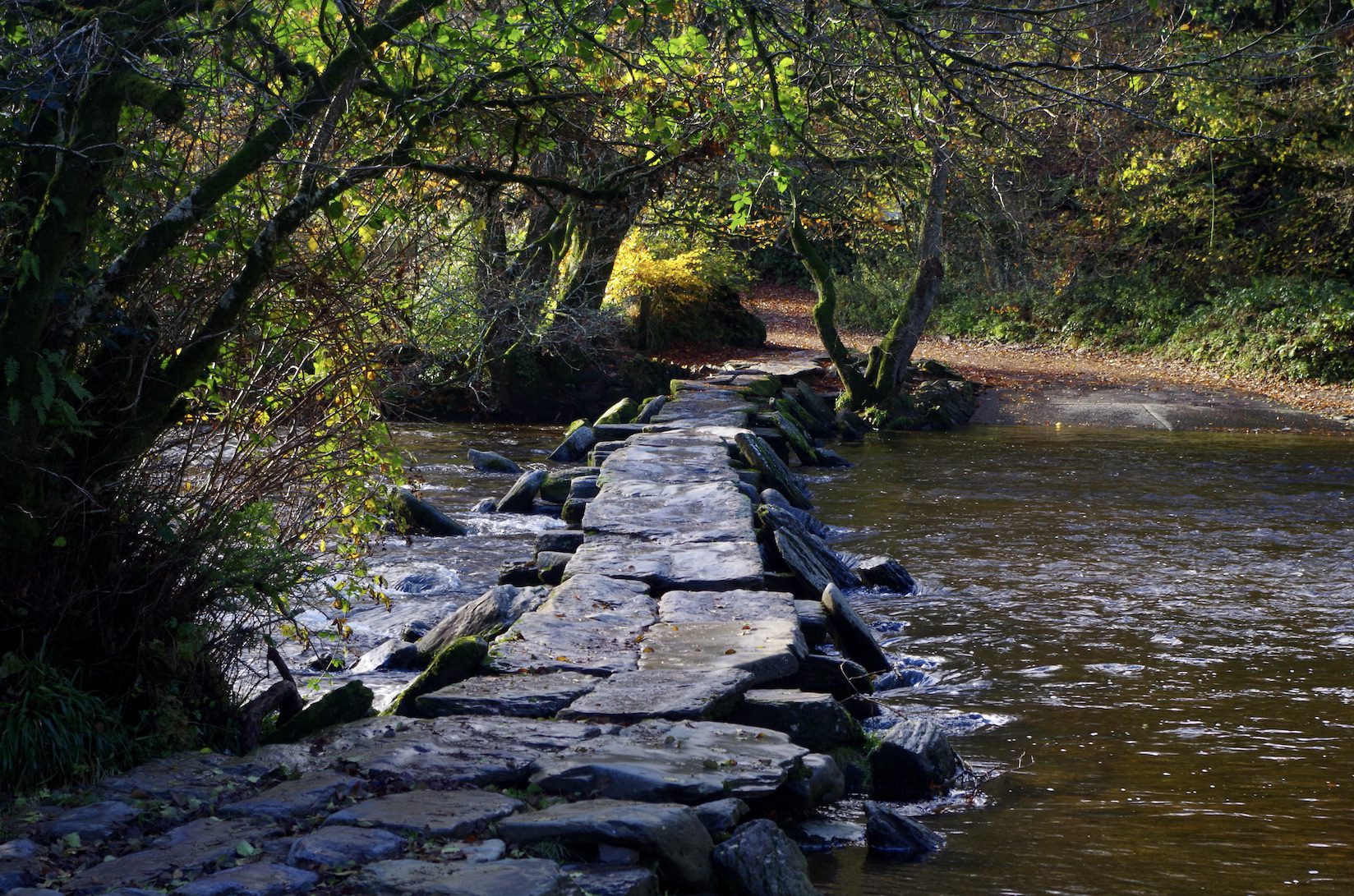
Our generation have been fortunate to have enjoyed nature. As a child I played in our rivers relishing simple delights. In the years since my childhood the world’s population has more than doubled.
Our impact on nature is now significant and how we retain that vital connection without destroying it is certainly a challenge.
I expressed my view at the end of the talk that the world needs to refocus and challenge the perception that GDP is how we measure success (Gross domestic product (GDP) is the standard measure of the value added created through the production of goods and services in a country during a certain period. As such, it also measures the income earned from that production, or the total amount spent on final goods and services (less imports).
How do we put a value on the natural world that is vital to our physical and mental health?
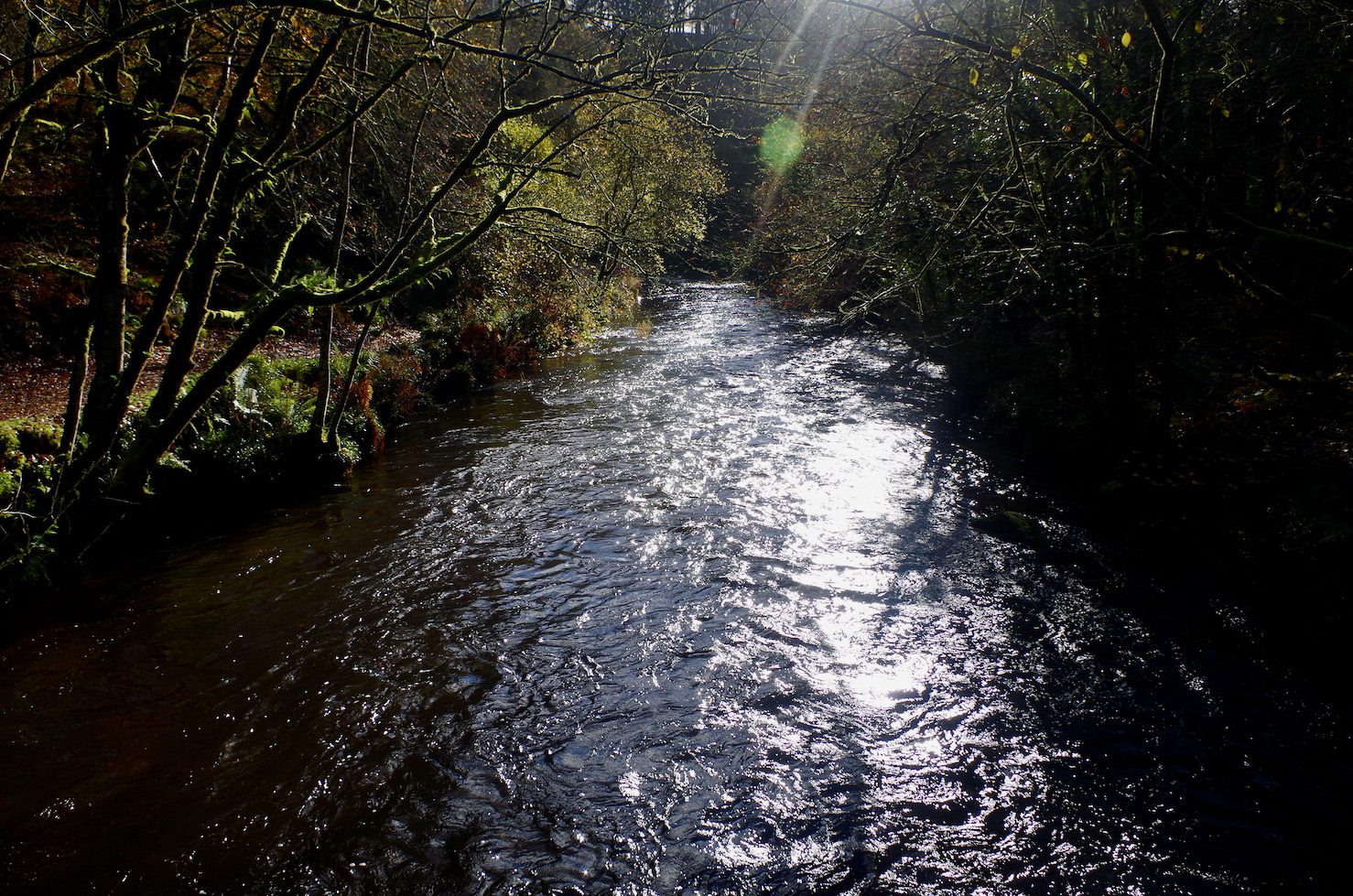
Below is my own attempt at poetry and the demise of salmon in Westcountry Rivers during a brief passage of time.
I REMEMBER WHEN
The old guy said,
I remember when the salmon poured into the pools,
Packed like sardines you could have walked across their backs, (1983)
I remember when some anglers caught one hundred salmon in a season, (2003)
It’s been a better season we caught forty from the river last year, (2023)
I remember when there were salmon in the river, (2043)
I remember being told there were once salmon in this river, (2063)

